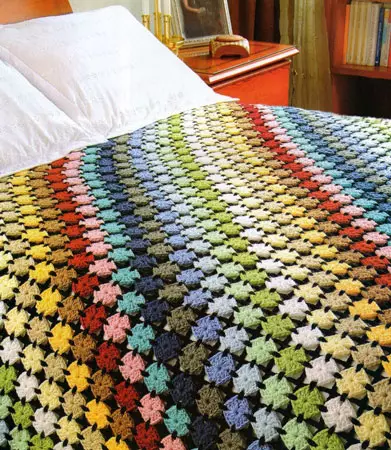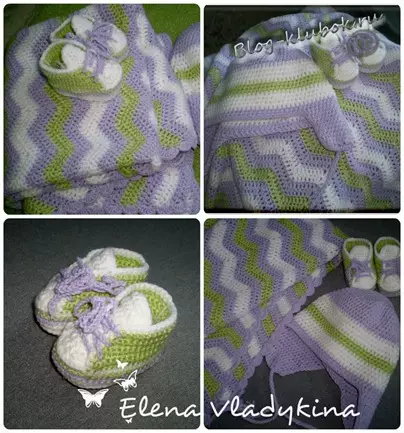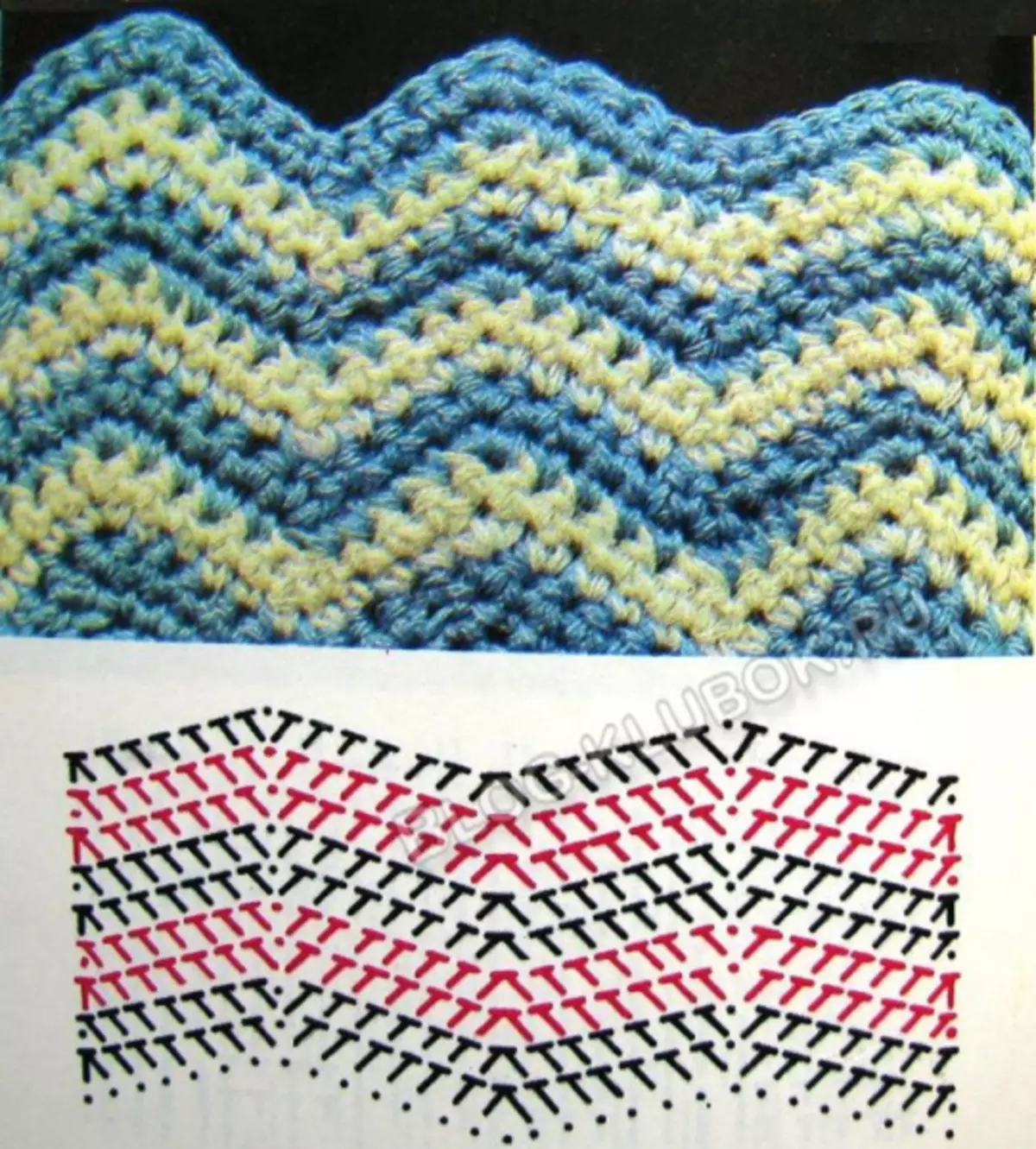Knitting is one of the common and interesting types of needlework not only adults, but also children, since knitting technique is easy and accessible to everyone. You can knit with spokes, and crochet. With the help of a hook, you can quickly create any items: sweaters, vests, sweaters, dresses, scarves, hats, panama, mittens, gloves, booties; Finishing of clothing objects: lace, buttons, flowers, collars, cuffs, and decorative items used in everyday life: napkins, blankets, pillowcases on sofa pillows, tracks, bed linen, curtains on the windows. Plaid crochet, the scheme and the description of which will be below, fit very easily.
Preparation for work
For crochet, you can use any threads (woolen, half-walled, hlobachable and synthetic). Depending on the yarn, it is possible to link dense products with embossed patterns, as well as thin, lace, openwork canvas.
To knit children's things or household items for children (booties, suites, hats, plaids, pads, toys) it is better to use threads from natural materials, as woolen products can cause skin irritation. Synthetic threads can cause allergies, so the best option is a cotton or linen yarn.

Hooks are metal, plastic and wooden. The size of the hook depends on the thickness of the yarn, the larger hooks are used for thick woolen threads (from 2.25 mm to 19 mm), and for lace napkins with openwork patterns, use thin metal hooks (No. 24 or 0.4 mm; the fattest one - 00 or 2.7 mm).
The size of thick hooks is numbered so: the thicker the hook, the greater the number, but in thin hooks, on the contrary: the thinner the hook, the greater the figure.
Easy option
Using the example of the plaid, consider an easy version of knitting baby plaid with schemes and descriptions. The work consists of a children's blanket, booties and caps for the baby, but the story will only go about how to knit with a crochet and what to make mistakes!
Article on the topic: Knitted summer tunic with knitting and crochet - with schemes

It will take: Yarnart yarn Vava (100% acrylic, 50 g / 150 m) of three colors - the main (in the case presented) 200-250 g, white and lightweight colors for 100-150 g, hook No. 3.5.
It is necessary to dial the chain of air loops lilac color 176 pcs. + 2 V.P. (Air loops) lifting. The size of the plaid is obtained in a width of about 1 meter. The number of loops should be divided into 7, plus two V.P. In accordance with the circuit 2 of a row of columns without a Nakid (ISP) with the main color and change the thread. You can simply fix the thread by skipping it several times through the loop of the previous row. Each subsequent row begins with checking 1 air loop. Then 2 rows are tied white, after which again lilac 2 rows, 2 rows of Saladov, 2 rows of lilac and so on. The color sequence can be varied, here it will tell fantasy.
How do zigzags get this blanket? When the series begins and 7 columns are tied without a Nakid, followed by adding 1 air loop, it will lead to an increase in the edge, which is required to form the vertex of the corner. The columns are again pronounced in the amount of 6 pieces, and the next seventh column is tired together with the eighth in one loop, which leads to a decrease in the edge, that is, the base appears. We repeat the 6 columns without Nakid and bind 1 air loop and so on, here it turns out a zigzag pattern.

Warning for those who first knit plaid: when changing the color, the thread should not be trimmed, and it is better to stretch around the edge, because when washing the plaid, the threads can fluff, and then all the hidful ends will be visible as you can understand, the view of the plaid will be unsightly.
The side edges of the plaid can be tied with a rachy step, or in this case shells: Rapport * 1 Stage without a Nakid (ISP), in the next. Loop 3 Stump with Nakud (SSN), 1 V.P., 3 Stumps with Nakid *, then everything is repeated. Wash the knitted plaid is better in cool water, without squeezing, and dry slightly jumping so that it does not stretch.
Article on the topic: Santa Claus do it yourself for the new year from the fabric
Video on the topic
On the presented model of the plaid, beginner knitters will be able to gain experience, so to speak, fill their hands, and move to knitting more complex patterns. Knitting crochet for beginners can be seen below in video tutorials:
